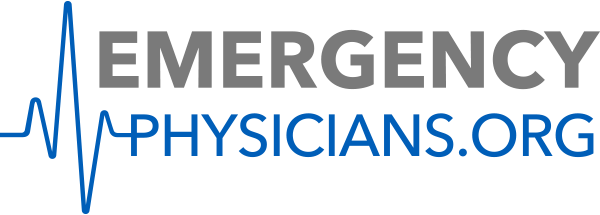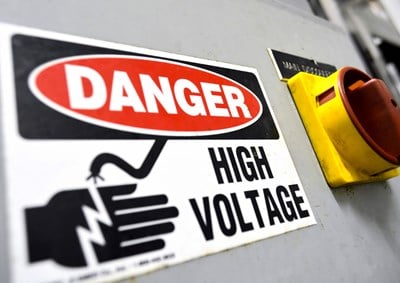Asthma is a chronic lung disease that results in 1.8 million emergency visits and about 4,000 deaths each year. There are several types of asthma, and although the disease can be controlled, there is not yet a cure, which means that asthma patients must manage their condition on a daily basis. Moreover, it is estimated that about half of asthma sufferers do not have their condition under control, making it more likely that these patients will end up in an emergency department as a result of an asthma attack. When poorly controlled, asthma is potentially life-threatening.
The characteristics of asthma include inflammation (swelling and irritation) of the airways and bronchoconstriction (tightening of the muscles surrounding the airways). Often worse at night, these problems shrink the airways, making it more difficult to breathe. The often-missed warning signs of poorly controlled asthma are:
- Waking at night wheezing and/or coughing
- Requiring a quick-relief inhaler more than twice a week
- Missing school or work
- Being unable to participate in everyday activities
- Requiring emergency or urgent care in order to breathe properly
Respiratory infections, such as the common cold or flu, are common triggers of asthma exacerbations, (which is why persons with asthma are advised to get a flu shot each fall when the vaccine becomes available). Other triggers include exercise, laughing or crying hard, cold air and irritants, such as poor air quality (e.g., Code Red ozone pollution days in the summer), chemicals, smoke, perfume and air fresheners. Some allergens also can serve as triggers. Common inhaled allergens include dust, pollen, mold or animal dander.
The symptoms of asthma include:
- Difficulty breathing
- Tightness in the chest
- Coughing and wheezing
Asthma attacks that appear to be severe or that do not respond to the patient’s normal medication require immediate medical attention. Less serious attacks or an increasing frequency of asthma attacks should be evaluated by a visit to one’s doctor. In some cases, the patient may seek the advice of an asthma care specialist – such as an allergist or pulmonologist.
Asthma patients should go to the emergency department if they have severe asthma symptoms, especially if these symptoms are accompanied by severe sweating, faintness, nausea, panting, rapid pulse rate, and pale, cold, moist skin. (These may be signs of shock or a potentially life-threatening drop in blood pressure.) These patients may be experiencing a potentially fatal asthma attack, known as “status asthmaticus.”
Seek immediate medical attention for the following symptoms and warning signs associated with this potentially life-threatening condition:
- Persistent shortness of breath or breathlessness experienced even while lying in bed.
- An asthma attack that is not relived by a usually effective rescue inhalers.
- Lips or fingernails are turning blue (or gray in persons with dark complexions).
- Straining to breathe or the inability to complete a sentence without pausing for breath.
- A feeling of chest tightness.
- Feelings of agitation, confusion or an inability to concentrate.
- Hunching of shoulders, straining of abdominal and neck muscles or sitting or standing to breathe more easily
These are all signs of impending respiratory system failure, a potentially fatal condition. Be aware also that fatal asthma attacks often occur with few warning signals, and that they can come on quickly, leading rapidly to asphyxiation and death. Fatal asthma attacks are more common among persons who have poor control of allergens or asthma triggers in their daily environments and an infrequent history of using peak flow monitors and inhalers as aids in controlling their asthma.
It is important to note that extremely severe, potentially fatal asthma attacks may not feature more wheezing and coughing – thus making such symptoms unreliable in judging the severity of asthma attacks. In such cases, the breathing airways have become so restricted that there is not enough air going in and out of the lungs to cause wheezing or coughing. (In addition, wheezing also can be a sign of other health conditions, such as respiratory infection and heart failure, so it is important to seek prompt medical attention if these other serious conditions are suspected.)
Emergency department treatment of asthma typically includes oxygen, inhaled bronchodilators (such as albuterol), and systemic corticosteroids (such as prednisone). Long-term asthma treatment includes inflammation “controllers,” such as inhaled corticosteroids, and symptom ”relievers” such as inhaled bronchodilators.
Since the key to preventing asthma attacks is controlling them, it is important to seek out proper medical care, take medication as directed and become educated as to how best avoid previously described “asthma triggers.”
 American College of Emergency Physicians
American College of Emergency Physicians







